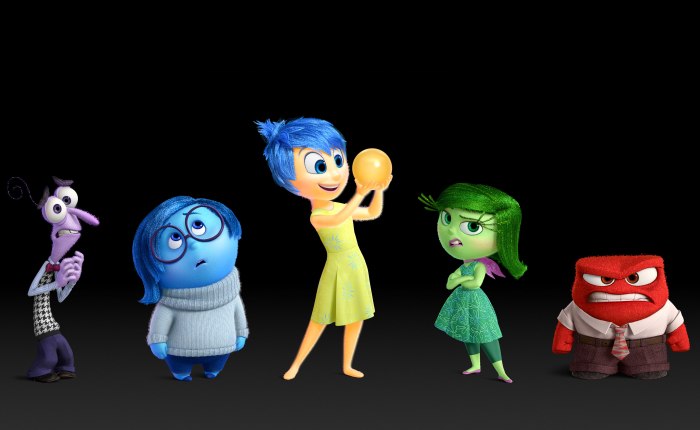Some definitions of ‘affect’ hold it to be pre-linguistic, something fundamentally ‘non-representational’ (Massumi, 1995), like the sensation of anxiety conjured by a particular urban environment. 
Affect in this guise is automatic. It is something the world conveys upon us as if by magic. The brain and wider nervous system are often crucial to such arguments, since they react to stimuli so rapidly it is easy to see how unconscious some of our responses can appear. In contrast, Margaret Wetherell (2012) understands affect to be entangled with all the rest of the mess of the world. Something that can happen in the blink of an eye, something embodied and habitual, yes, but also something that we designate to ourselves and others as part of situated everyday life. Affect is something that we reflect on, foster or discourage. It is structured and also specific.
In my own work I have been musing on affect and emotions as part of studying a very messy situation: what it is like to be caring for someone with dementia. Primarily I have been interested in how we deal with change in this context. No matter which kind of dementia a person is living with, there will be a lot of change involved, not least in their behaviour, but also in their relationships and in their capacities.  One form of dementia is particularly pertinent to understanding affect and emotion. Behavioural variant frontotemporal dementia (bvFTD) involves a range of symptoms, but central to its manifestation are changes to a person’s affective disposition. People can become disinhibited and lack shame, empathy and insight. They might cry or laugh uncontrollably. Sometimes their tastes change, particularly as regards their appetite for sweet and sugary foods. They can also become obsessional, repeating routines and behaviours without relent.
One form of dementia is particularly pertinent to understanding affect and emotion. Behavioural variant frontotemporal dementia (bvFTD) involves a range of symptoms, but central to its manifestation are changes to a person’s affective disposition. People can become disinhibited and lack shame, empathy and insight. They might cry or laugh uncontrollably. Sometimes their tastes change, particularly as regards their appetite for sweet and sugary foods. They can also become obsessional, repeating routines and behaviours without relent.
 For example, arranged around the living room of a carer I interviewed, Mike, there were several electronic drum kits. However, Mike told me as I we walked in that he doesn’t play the drums. They were for his wife, Lucy, who was living with bvFTD. Lucy would repeatedly bash and drum on anything she could find. Mike had bought the drums because at least they made familiar sounds, had a volume control and weren’t easily demolished.
For example, arranged around the living room of a carer I interviewed, Mike, there were several electronic drum kits. However, Mike told me as I we walked in that he doesn’t play the drums. They were for his wife, Lucy, who was living with bvFTD. Lucy would repeatedly bash and drum on anything she could find. Mike had bought the drums because at least they made familiar sounds, had a volume control and weren’t easily demolished.
This led me to ponder on whether Lucy drums things because of a change in her brain. Certainly there is a neurological problem causing a disruption in her everyday life. But why drums? This was a question Mike regularly posed to himself and doctors. Some answers he received were that it might stop some unpleasant sensation that Lucy feels, or that she might derive some pleasure from the physical activity, from the sound or from the effect it has on others. Mike wonders if she’s angry, and says that she doesn’t show any empathy for him as he struggles to tolerate the endless cacophony. And Mike struggles to manage his own anger as he soldiers on. But why do the drums bother him, exactly? It seems that there’s certainly an element of automation here. The drums make an unpleasant noise, which makes him feel angry even against his will. But how do we judge a pleasant noise versus an unpleasant noise? There are physical factors. Some noises hurt our ears. But cultural ones too, having to do with the way in which rhythm and melody has been structured in the West. These physical and cultural factors also inform each other.
And surely Mike is also angry because of the sense of injustice he feels. That dementia has affected Lucy in this way and that she does the things that she does. And that he is losing her. He is still angry with her even though he knows this, which makes him angry with himself, and further angry with the disease and that he can’t do anything about it.
Clearly there are multiple forces shaping the manifestation of anger in Mike and Lucy’s relationship, each time situated, specific and multiple, but also part of a broader story of changing embodiment, capacity and everyday life, one that is at least partly shared with others living with bvFTD and their carers.
Encounters like these with changes in affect lead me to believe that we need to better understand its entanglement with the body and the brain, certainly, but that such an investigation has to be conducted from within the relational world in which these changes take place.
References
Massumi, B. (1995) ‘The Autonomy of Affect’, Cultural Critique, 31, 83-109.
Wetherell, M. (2012) Affect and Emotion: A New Social Science Understanding (London: Sage Publications).


 The concept was appealing to them because it helped to explain why seemingly rational people could be co-opted into irrational behaviour. In this regard, it was particularly the cases of racist, xenophobic, fascist and far-right politics that they hoped to explain away. So the concept has had a politics itself from its first uses in social science. Some of its use today is similarly political, as scholars have sought to understand rioting behaviour, terrorism and contemporary far-right politics through the assumption that emotional contagion is involved in the transition from rational to irrational behaviours in crowd and collective contexts.
The concept was appealing to them because it helped to explain why seemingly rational people could be co-opted into irrational behaviour. In this regard, it was particularly the cases of racist, xenophobic, fascist and far-right politics that they hoped to explain away. So the concept has had a politics itself from its first uses in social science. Some of its use today is similarly political, as scholars have sought to understand rioting behaviour, terrorism and contemporary far-right politics through the assumption that emotional contagion is involved in the transition from rational to irrational behaviours in crowd and collective contexts. Plenty of people were ‘recruited’ the emotional behaviours involved in the rioting, but plenty of people nearby the riots were not. What made the difference between the people who were engaged by the spectrum of emotions of the various rioting actions across the country and those who were not?
Plenty of people were ‘recruited’ the emotional behaviours involved in the rioting, but plenty of people nearby the riots were not. What made the difference between the people who were engaged by the spectrum of emotions of the various rioting actions across the country and those who were not? For a start, people have immune systems and so regularly are able to resist transmission of infections. The immune system is made of various processes that interact in complex ways with each other, with other bodily systems and with other bodies and the environment, so that at any given point in time a person may be more or less susceptible to a particular infective agent than at any other. Repeated exposure to infectious agents often increases this resistance. Our immune systems are individual and change over time, they are inherited and evolved and can be supplemented or compromised by various technological interventions. And so on and so forth.
For a start, people have immune systems and so regularly are able to resist transmission of infections. The immune system is made of various processes that interact in complex ways with each other, with other bodily systems and with other bodies and the environment, so that at any given point in time a person may be more or less susceptible to a particular infective agent than at any other. Repeated exposure to infectious agents often increases this resistance. Our immune systems are individual and change over time, they are inherited and evolved and can be supplemented or compromised by various technological interventions. And so on and so forth.